Migratory Waterfowl

The Outer Banks is a birder’s paradise. Whether amateur or experienced, there is wonder in trekking through one of our maritime forests in spring or summer looking for songbirds. In fall and winter, one can watch in awe as migratory waterfowl arrive by the thousands along the shores of the Currituck Sound and Pea Island National Wildlife Refuge.
To write about all of the birds of the Outer Banks would end up being a book. Instead, we’ll start with migratory waterfowl and then go on to other birds over time.
There are three broad categories of migratory waterfowl that spend fall and winter on the Outer Banks: ducks, geese, and swans.
We’re taking a look at some of the most common ducks, geese, and swans. For a more complete list, check out the Audubon Society’s article “Welcoming Our Waterfowl,” or the Pea Island National Wildlife Refuge bird website, which has information about many birds commonly seen at the refuge.
Ducks
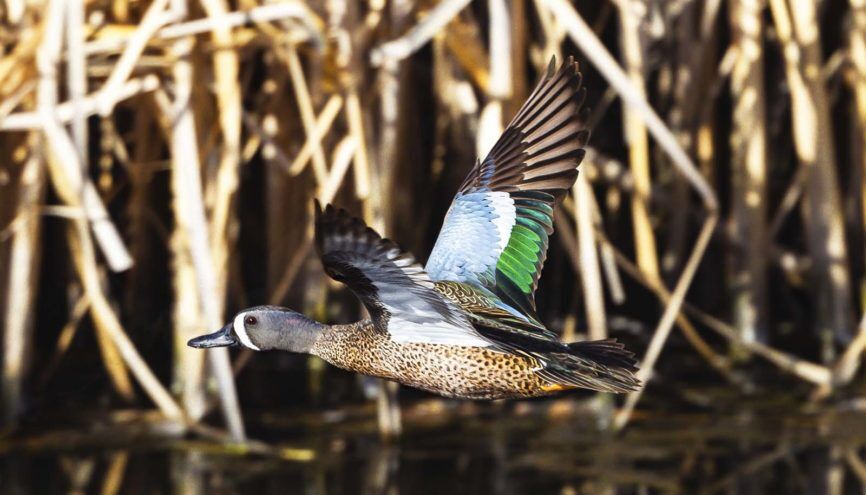
The blue-winged teal is the first of the migratory waterfowl to show up on the Outer Banks, usually arriving in September. It’s just a rest stop for them, though; they’re on the way to points south, sometimes as far away as Central and South America.
Not long after they leave, though, our regular visitors show up.
American Black Duck
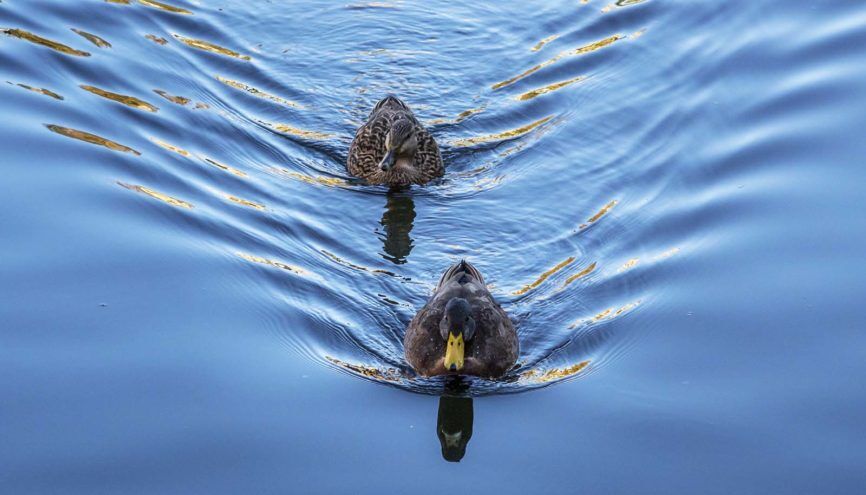
The American Black Duck is fairly common along the Outer Banks. It looks similar to female mallards, but marshes and estuaries in this area are more to the liking of black ducks than mallards.
The males have a dark brown body with a very light brown, maybe beige head and neck, and a yellow bill. The female does look a lot like a mallard female, although their feathers are a little darker brown with black highlights.
It is a dabbling duck, meaning when it feeds in the water, the head is beneath the surface, and its butt is in the air. The American black duck will also graze on land at times, looking for seeds and roots.
This is a duck that is sometimes seen in the warmer times of the year as well.
Northern Shoveler
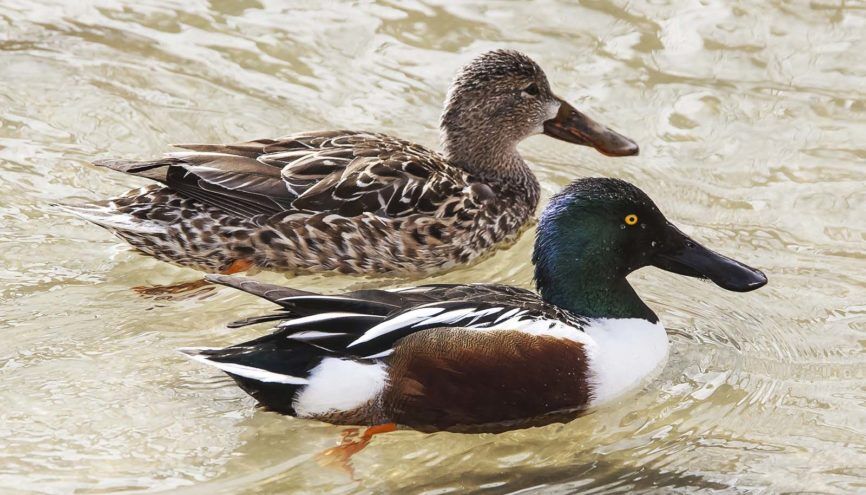
Aptly named and quite common, the Northern Shoveler is easily identified by its shovel-like beak.
The male is colorful with a green head, brown flanks, and a white body. The female has the same shovel for a beak with a brown and white body.
The beak has tiny comb-like serrations that they use to filter their food, consisting of aquatic invertebrates and seeds, from the water.
They are a dappling duck, feeding with their heads underwater and tail feathers up.
They are common from October through March.
Northern Pintail
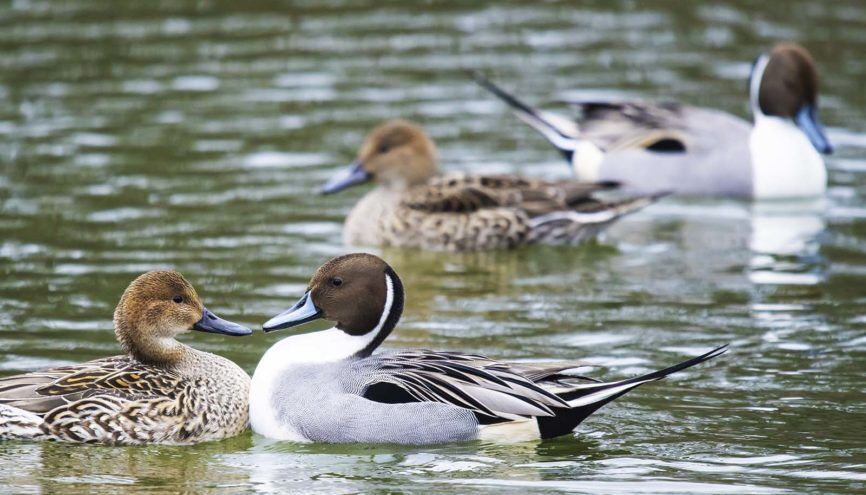
Ubiquitous thought the world, Northern Pintails begin showing up midway through September and are gone by the end of March.
The male is a beautiful duck with an elongated pin-like tail, gray flanks, a white body, and a brown head. The female is a much more subdued brown and white body and does not have the same pintail.
They are very common at Pea Island, Bodie Island, and Alligator River National Wildlife Refuge.
Green-Winged Teal
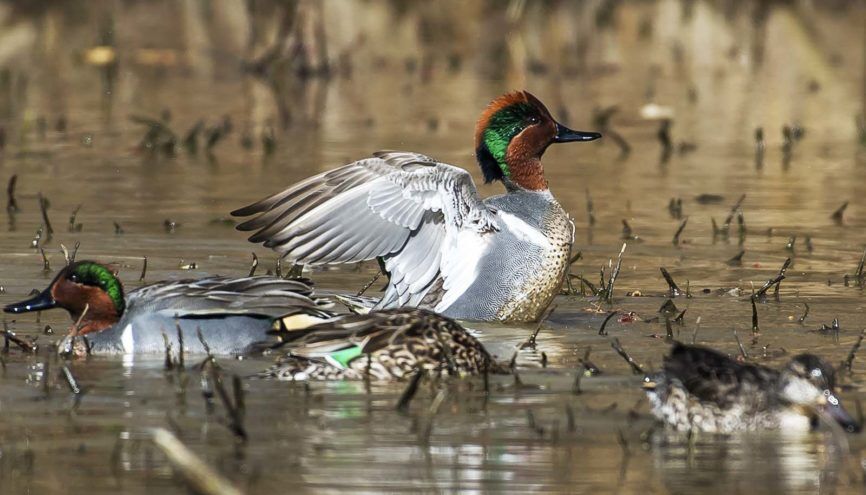
Unlike its cousin the Blue-Winged Teal, the Green-Winged Teal shows up by the thousands beginning in September and stays around the Outer Banks until late March or early April.
The smallest of the dappling ducks, it has a dark green crown on its head with a dark brown head. The female is a much more subdued brown and white but will often have a bright green tip on her wings.
Red-Breasted Merganser

With its shaggy head, red bill, and brownish-red chest, it’s hard to miss the Red-Breasted Merganser. The female is not quite as brightly colored, but she has the same shaggy hairdo.
Arriving in November and staying until April, the Red-Breasted Merganser is one of the most commonly seen migratory waterfowl in the state. In some years, the densest winter population recorded in the US has been at Pea Island National Wildlife refuge.
It is a diving duck, feeding primarily on small fish and crustaceans.
Other Common Ducks
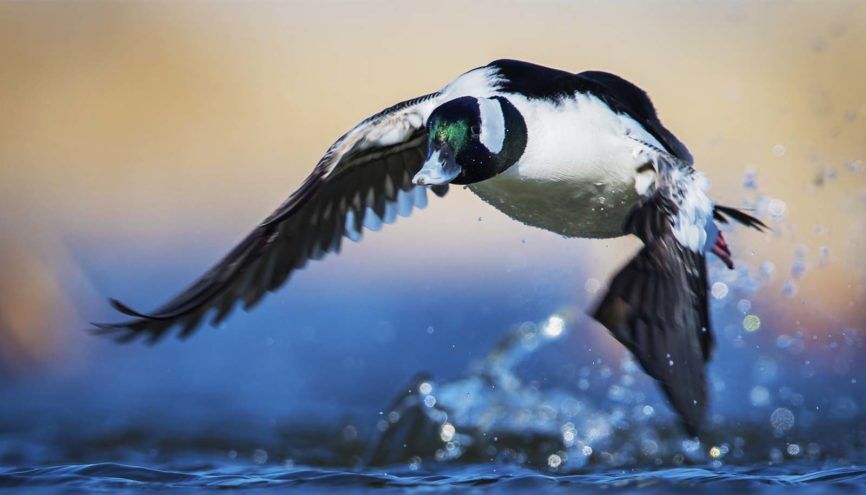
Other commonly seen migratory ducks on the Outer Banks include Bufflehead (above), American Wigeon, and Gadwall.
Swans and Geese
Tundra Swan
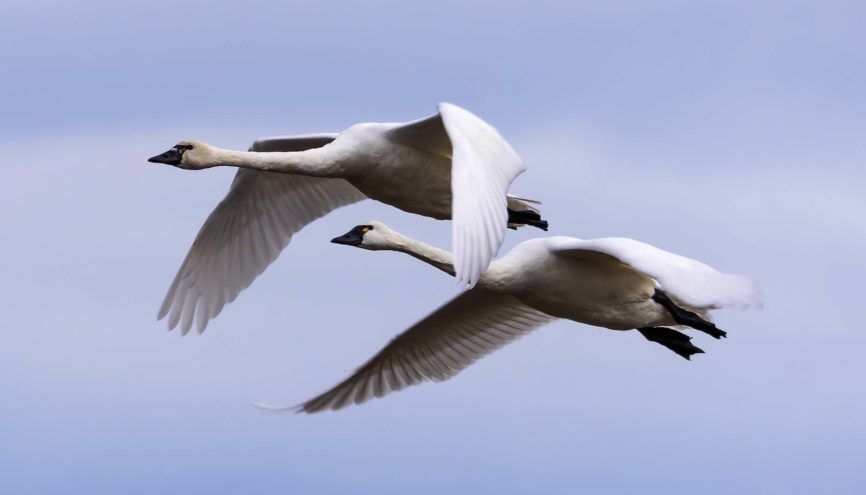
Merriwether Lewis called them whistling swans for the sound they made, but Tundra Swan is a more apt name for its mating and nesting sites in the far north of Canada and Alaska. They are large white birds, and at times when they are gathered by the 1000’s at Pea Island, it almost looks like snow on the water.
Their beaks and feet are black, but otherwise, tundra swans are all white.
Snow Goose
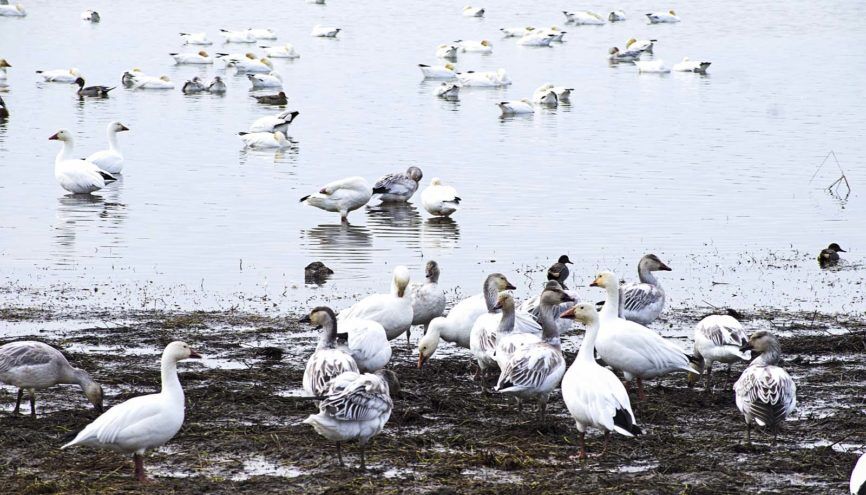
Their honking is distinctive, and it is one species of migratory waterfowl whose populations are on the increase. Look for them to show up in late October and stay around until the first of March.
Snow geese love corn and the seeds left in farmers’ fields. On the Currituck mainland, flocks can often be seen cleaning up the leftovers from harvest.
A medium sized goose, an adult Snow Goose usually weights around 4-7 pounds.
Canada Goose
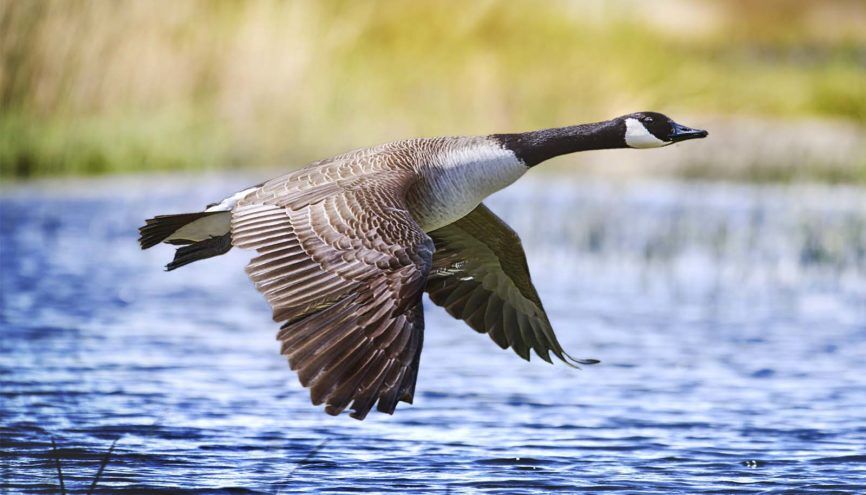
Once upon a time, the Canadian Goose really did live and breed in Canada and really was a migratory waterfowl.
There may be a number of reasons for the huge population of year-round resident populations. The NC Wildlife Commission notes that following a dramatic decline in Canada Goose populations in the 1980s, “…several state wildlife agencies including the N.C. Wildlife Resources Commission (NCWRC) released Canada geese to help bolster declining numbers of migrant geese. Many of the geese released were of the subspecies Branta Canadensis maxima with weak migrating tendencies.”
Another possibility is that Canada Geese are grass-feeding birds and with so many lawns available to them they have adjusted quite well to a habitat where there’s plenty of food.
